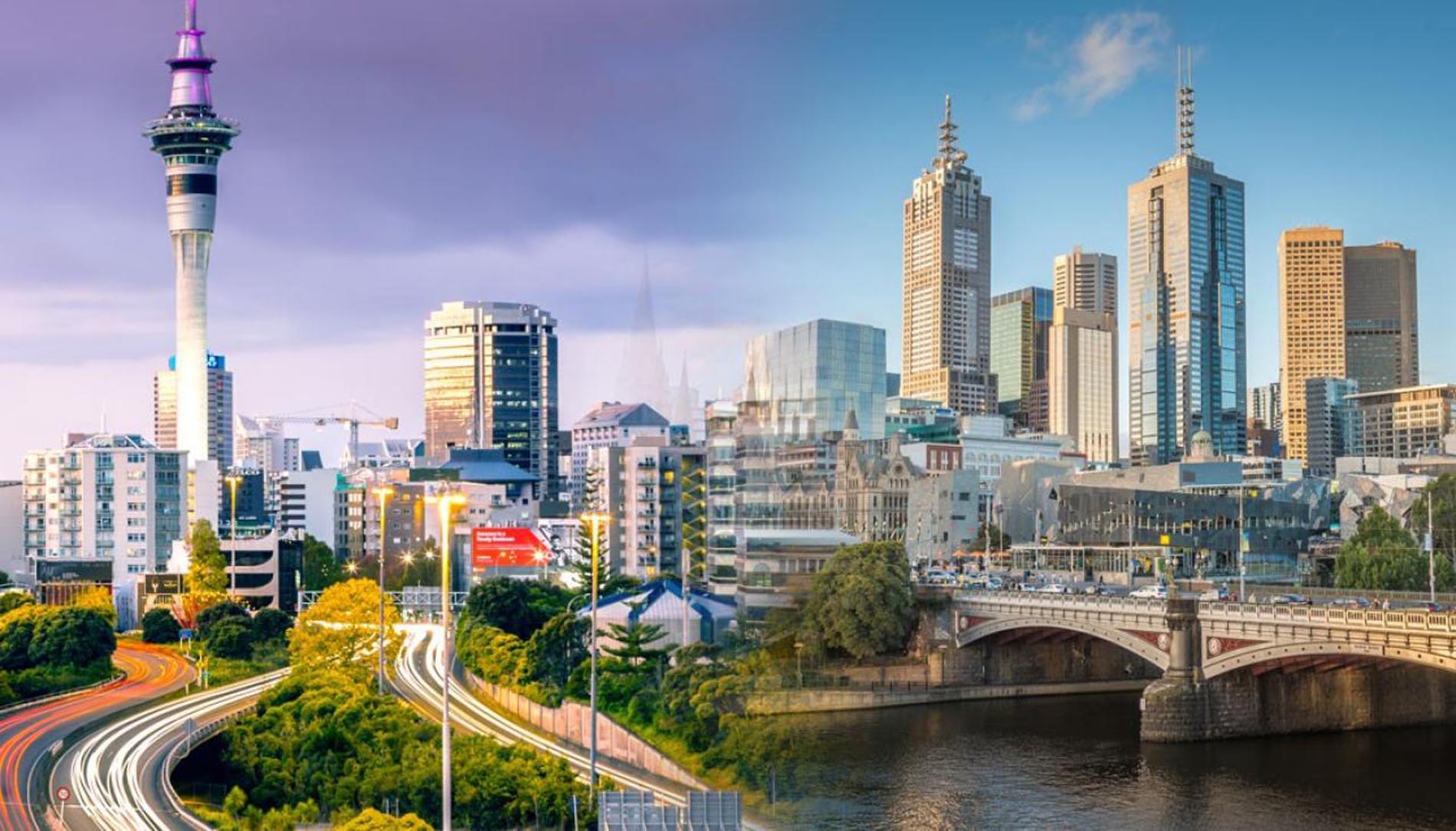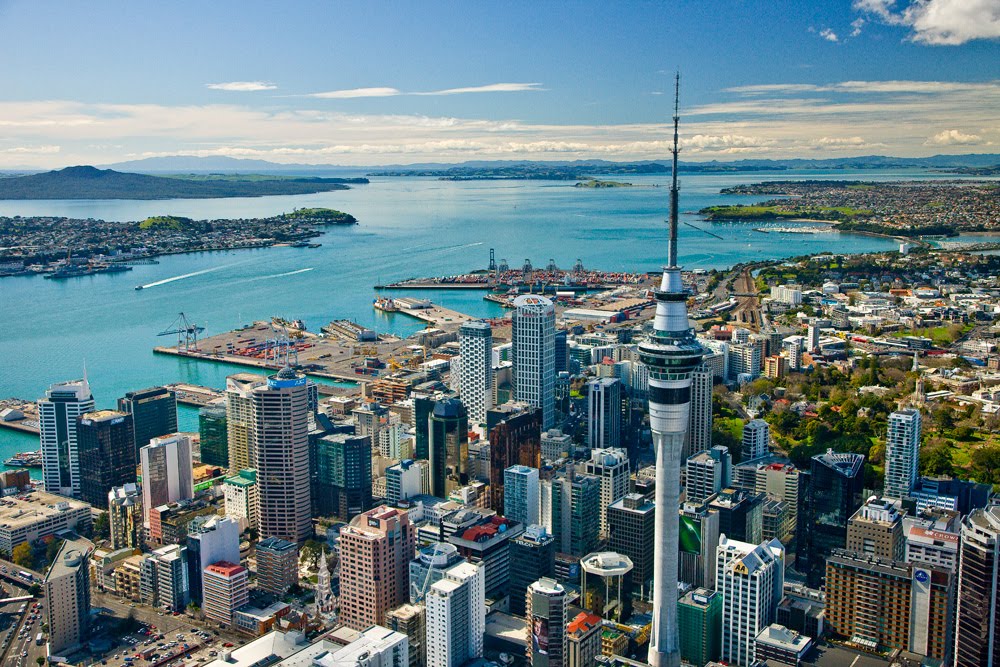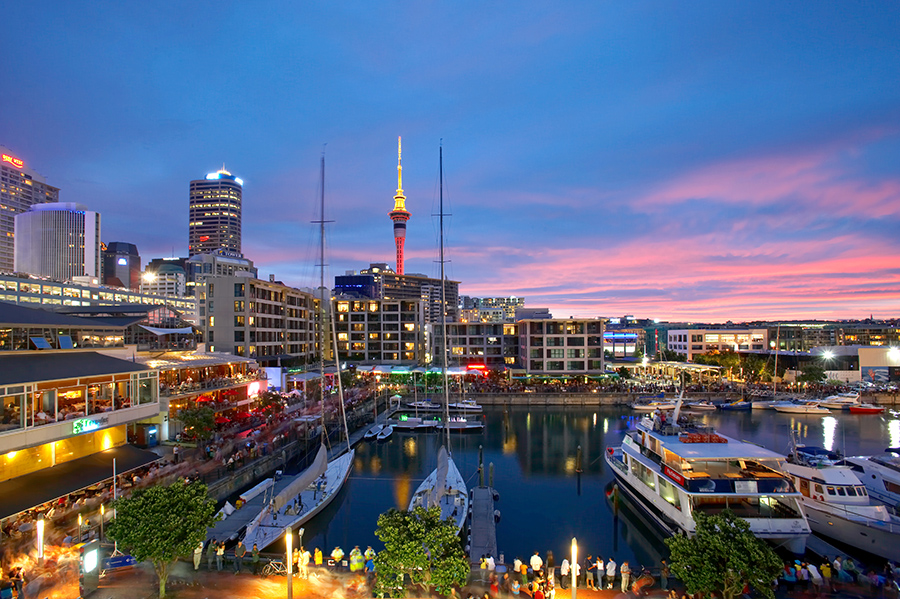Pictures of: Auckland
Location map
Airports
Hotels and other Accommodation
Consulates & Embassies
World Nomads
The Travel Insurance with the largest coverage

The Travel Insurance with the largest coverage

Auckland
Auckland is the most important, populated and dynamic city in New Zealand. It is located on the North Island, one of the two that form the country. The metropolitan area of Auckland or Greater Auckland (known in English as Auckland Metropolitan Area or Greater Auckland) is the largest in the country, as well as the largest population nucleus of the South Pacific, with more than 1,300,000 inhabitants (more than one quarter of New Zealand's total population) and growing more than in the rest of the state. Although Wellington is the political capital of New Zealand, Auckland is the economic capital of the country.
It is a modern and cosmopolitan city. The center and suburbs have developed within the same time period and urban standards as California (in fact, Los Angeles and Auckland share their urban planning and are sister cities). Currently the city extends over a wide area bounded to the east and west by two large bays (Waitemata and Manukau) as well as by the Pacific Ocean and the Tazmania Sea.
It is a modern and cosmopolitan city. The center and suburbs have developed within the same time period and urban standards as California (in fact, Los Angeles and Auckland share their urban planning and are sister cities). Currently the city extends over a wide area bounded to the east and west by two large bays (Waitemata and Manukau) as well as by the Pacific Ocean and the Tazmania Sea.
History
The first human settlements in the area date back to 1350. Initially, the Maori tribes created several fortified settlements (pán) in the volcanic cimos of the territory. The Maori population in that area was approximately 20,000 inhabitants, before the arrival of the Europeans. The subsequent introduction of firearms, which began in the North Island, provoked inter-tribal wars, causing the dispersion of the native Iwis, who due to the lack of weapons sought refuge in areas less exposed to the coast. As a result, the region had a relatively low number of native Maori, when the European settlement in New Zealand began.
After the signing of the Treaty of Waitangi, at the beginning of the year 1840, the new governor of the colony, William Hobson, chose the area for the formation of the new capital. For a time, Port Nicholson (now Wellington) was seen as a more appropriate option, as the administrative capital of the territory, due to its proximity to the South Island, which had been populated more quickly. Due to this, Auckland became the capital and main city of the province of the same name, until the abolition of the provincial system in the year 1876. For the celebration of the event a regatta of sailboats was organized, a tradition that is still celebrated today in the anniversary of Auckland, at the end of January. Hobson chose the name of the city in honor of George Eden, first Duke of Auckland, protector and friend of Hobson, who granted him the mission in the Indies. Auckland would be the capital of New Zealand for the next 25 years, to then pass that honor to Wellington.
After the signing of the Treaty of Waitangi, at the beginning of the year 1840, the new governor of the colony, William Hobson, chose the area for the formation of the new capital. For a time, Port Nicholson (now Wellington) was seen as a more appropriate option, as the administrative capital of the territory, due to its proximity to the South Island, which had been populated more quickly. Due to this, Auckland became the capital and main city of the province of the same name, until the abolition of the provincial system in the year 1876. For the celebration of the event a regatta of sailboats was organized, a tradition that is still celebrated today in the anniversary of Auckland, at the end of January. Hobson chose the name of the city in honor of George Eden, first Duke of Auckland, protector and friend of Hobson, who granted him the mission in the Indies. Auckland would be the capital of New Zealand for the next 25 years, to then pass that honor to Wellington.
Climate
The climate of the city is temperate, with hot, humid summers as well as mild winters. The average maximum temperature in January and February is 23ºC, while in July it is 13ºC. The highest temperature recorded was 30.5 ° C, the lowest temperature being -2.5 ° C. Rainfall is frequent throughout the year (more than 1,000 mm annually), and is especially abundant in winter.
Auckland is one of the sunniest cities in the country with 2,060 hours of sunshine a year.
Auckland is one of the sunniest cities in the country with 2,060 hours of sunshine a year.
Holidays
New Year: January 1st and 2nd.
Waitangi Day: February 6. The signing of the Treaty of Waitangi, the founding document of New Zealand in the year 1840, is celebrated.
Good Friday: Celebrate the Friday after Easter Sunday.
Easter Monday: Celebrate the Monday after Easter Sunday.
Anzac Day: April 25th in Australia and New Zealand. The Battle of Gallipoli (Turkey), in which tens of thousands of ANZAC (Australian and New Zealand Armed Forces) and UK soldiers lost their lives in the First World War, is celebrated.
Queen's Birthday: First Monday in June.
Labor Day: May 1.
Christmas: December 25th.
Box Day: December 26th. During this time people make donations and offer gifts to the poorer classes of society.
Waitangi Day: February 6. The signing of the Treaty of Waitangi, the founding document of New Zealand in the year 1840, is celebrated.
Good Friday: Celebrate the Friday after Easter Sunday.
Easter Monday: Celebrate the Monday after Easter Sunday.
Anzac Day: April 25th in Australia and New Zealand. The Battle of Gallipoli (Turkey), in which tens of thousands of ANZAC (Australian and New Zealand Armed Forces) and UK soldiers lost their lives in the First World War, is celebrated.
Queen's Birthday: First Monday in June.
Labor Day: May 1.
Christmas: December 25th.
Box Day: December 26th. During this time people make donations and offer gifts to the poorer classes of society.
Languages
Until 1987, English was the only official language in Auckland and although it remains the predominant language in most regions, Maori became the second official language under the Maori Language Act of 1987. The two official languages spoken are also the most used: English is spoken by 98% of the population and Maori by 4.1%. Samoan is the most widely spoken unofficial language (2.3%), followed by French, Hindi, Cantonese and Mandarin.
Other tourist destinations in:
New Zealand
New Zealand
Other world tourist destinations
Why to book with ROTAS TURISTICAS
The best prices
Our partnerships with the world´s largest operators offer research on the best market prices.
More options
At Rotas Turisticos you can book the hotel, buy the air ticket, book the transfer from the airport to the hotel and vice versa, book the local excursions, rent the car, take travel insurance and consult the places to visit and where to go.
Holiday Tips & Destinations
Hundreds of holiday destinations with all the options that allow you to easily choose the destination that best suits your dream vacation.
ROTAS TURISTICAS
Links






